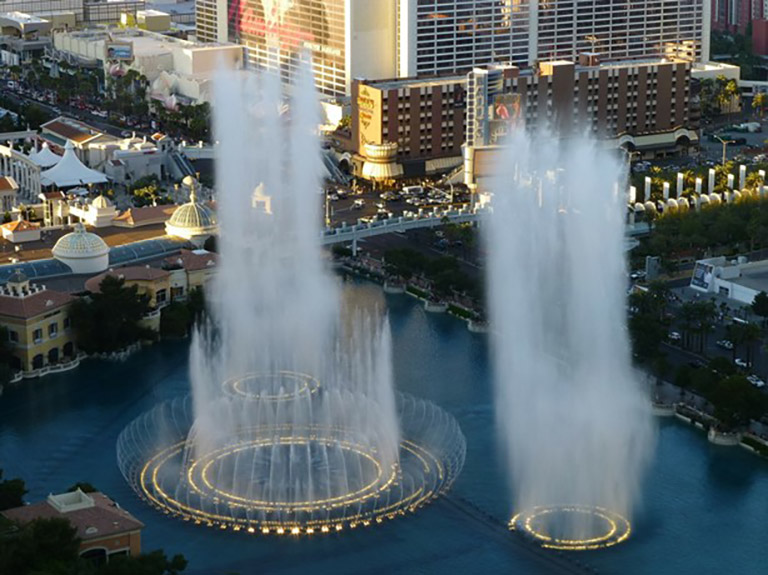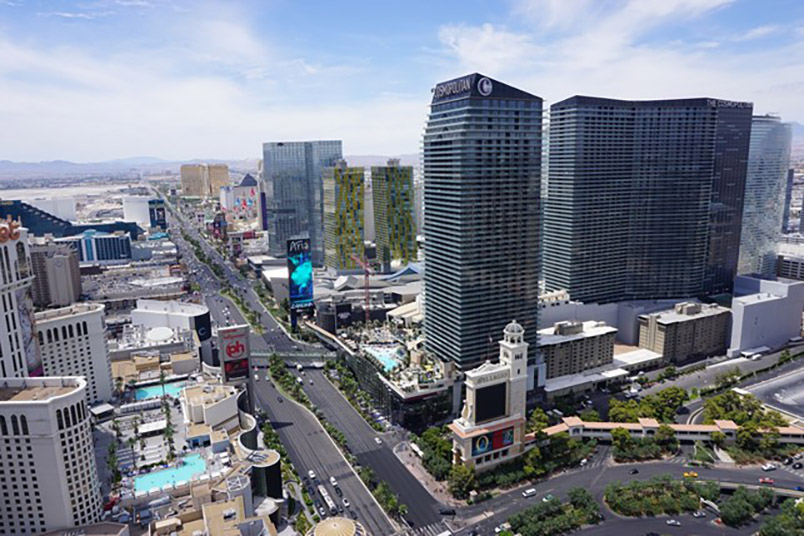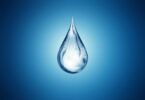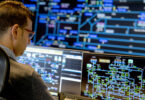Exclusive interview: H2O Global News Editor, Sion Geschwindt, spoke with Apana CEO Matt Rose about their smart water efficiency software that helped a famous Vegas casino improve water efficiency and save precious supplies.
Las Vegas went a record 240 consecutive days without rain last year.
Lake Mead, the reservoir that supplies the city with 90% of its water, is at its lowest level in history, forcing officials to impose the first ever mandatory water restrictions next year.
An entertainment metropolis of casinos, golf courses, and sprawling suburbs, Vegas residents consume about 219 gallons of water per person per day – more than four times that of San Francisco.
“We live in the desert. We are the driest city in the United States, in the driest state in the United States,” said Colby Pellegrino, deputy manager of resources for the Southern Nevada Water Authority, to the Guardian. “We have to act like it.”
Although the city’s per capita water consumption may be high, that’s not the full story.
Almost all the water used indoors gets treated, emptied into Lake Mead and used again – in a circular loop.
“Vegas has done a pretty good job in the last ten-to-14 years now recognizing water is a scarce resource. They’ve done that despite incredible population growth,” says Michael Cohen, an expert on the Colorado River basin at the Pacific Institute to Outside magazine. “They’re using less water now than they did 14 years ago. They’ve been aggressive, and they seem to be, at least in the short term, on a reasonably good path.”
However, despite proactive reuse policies, outdoor water use, leakages and other inefficiencies are still causing significant losses.
In a search for solutions, Vegas authorities and high-water users have started adopting smart digital approaches to reduce wastage, monitor consumption, and improve efficiency – to make every drop count.
Smart Water
Internet of Things (IoT) and data solutions can help water-users can keep track of their networks in real-time and respond to leaks and inefficiencies faster than ever before.
In 2016, The Las Vegas Valley Water District (LVVWD) implemented a leak monitoring project working on innovative applications of Internet of Things (IoT) technologies within a smart city environment.
Earlier this year, the LVVWD partnered with VODA.ai to provide artificial intelligence and machine learning decision support software which offers a virtual condition assessment of their entire water main pipe network.
Last month, the city announced it will take digital adoption a step further by creating a digital twin of a section of the city to tackle issues including noise pollution, water management, and emissions from buildings.
The plan is to scale up this digital twin to provide authorities with a complete virtual model of the entire city, including the water network.
“Water management has been one of the last industries to undergo a digital transformation,” said Apana CEO Matt Rose. “But as water becomes scarcer, industries are adopting digital solutions to give them a better understanding of their network to improve efficiency, save cost, and save water.
“All companies in 2021 should know what is going on in their water systems and digital solutions like IoT, big data and cloud analytics allow them to gain this situational awareness to make better decisions.”
Enter Apana
https://www.youtube.com/watch?v=RPpYq2QlLDw&t=58s&ab_channel=APANA%E2%84%A2
Apana is a US-based company pioneering a Water-Efficiency as a Service™ model.
Apana’s SaaS solution leverages the Internet of Things (IoT) and real-time analytics to give users a live view of their water network.
The IoT sensors retrieve data minute by minute, the analytics software continuously analyses it, and the company’s consultants are on hand to offer step-by-step guidance to solve problems as quickly as possible.
Rose explains: “We had a team of ex-military drone circuit board designers help us with the design of the IoT system. The sensors offer high data integrity, gather data every minute and last up to seven years on a single battery.
“We offer an end-to-end service from water meters to our cloud analytics platform that orders the data and looks for possible leakage points or other inefficiencies in the system.
“Our consultants are also on hand to guide you toward a likely solution as rapidly and accurately as possible.”
In 2018, MGM Resorts International partnered with Apana on a water conservation program at the famous Bellagio Hotel and Casino.
A winning hand
The Bellagio identified four areas where the monitoring and measuring of water use would be most effective: cooling towers, the water feature, pools and spas and hot water applications.
Twelve sensors were installed and currently, the system is monitoring data every minute from each water meter.
Apana LiNK™ radios connected to each water meter send data across the resort to two Apana LiNK™ Gateways. Gateways push data through a secure cellular VPN link directly to Apana’s cloud-based analytics engine.

The famous Bellagio fountain
This information produces a “water fingerprint” that is unique to each area of the property. It allows the company to see waste events when they are happening.
Through waste reduction and operational insights, Apana’s system has helped reduce water use 16% for fountain operations and 34% for pool operations.
This was the first time that MGM Resorts were able to quantify how many gallons of water were being used for specific maintenance tasks.
The digital transformation
Cities and industries across the world are increasingly adopting digital solutions to tackle the complex water problems of the 21st century.
Emerging technologies are giving water managers previously unthinkable levels of situational awareness and insight.
As we become more aware and informed about water networks, we unlock the potential to make the design, operations and maintenance of these assets more efficient and sustainable.
But the benefits of smart water usage go way beyond networks and utilities, extending throughout the supply chain and across industries all the way to the individual level.
Reliable, safe water supplies delivered at affordable prices are a cornerstone of well-being in all communities. Digital solutions offer an opportunity to not just achieve this goal, but to secure it over the long term.
Do you have an article or video that you would like to share? Submit your article here or keep up with the latest news from the water industry and wastewater industry by subscribing to our weekly newsletter.







